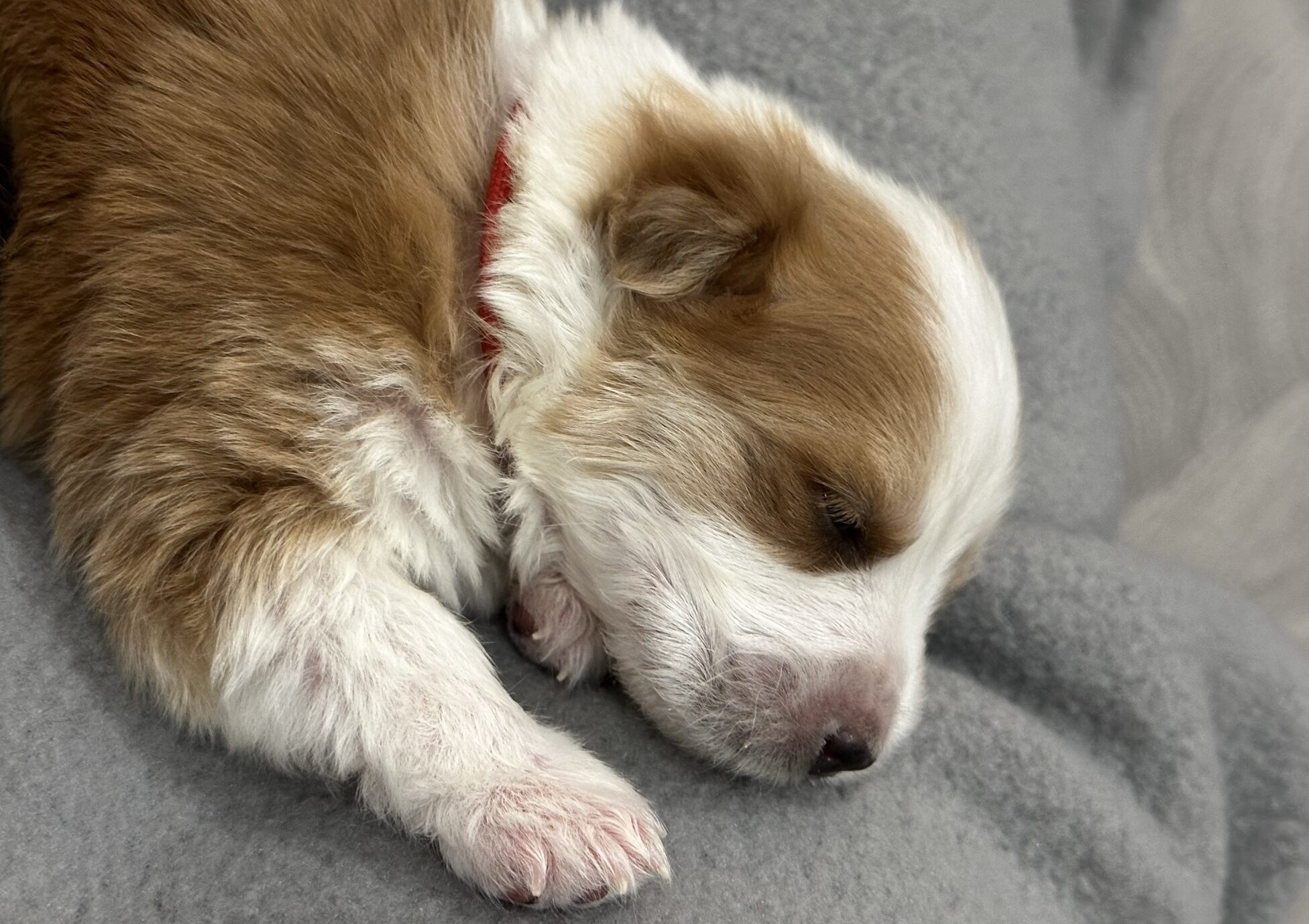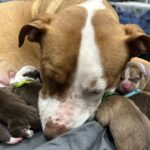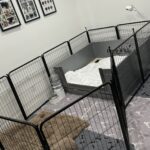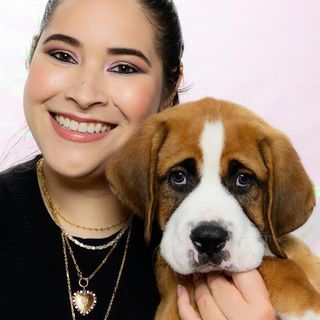For the first two to three weeks of their lives, newborn puppies are unable to eliminate on their own and have to be stimulated to go potty by their mom or human caretaker. As soon as you notice your newborn puppy starting to go potty on their own, you can introduce the concept of potty training to them! This will help to ready the pups for more formal potty training between 6- and 8-weeks of age.
When working with a litter of puppies, our focus is on using their natural instincts to direct them to potty in a specific area, away from where they sleep, eat, and play. Dogs are naturally inclined not to eliminate where they sleep, so we can use this to our advantage by creating a designated potty area and sleeping area.
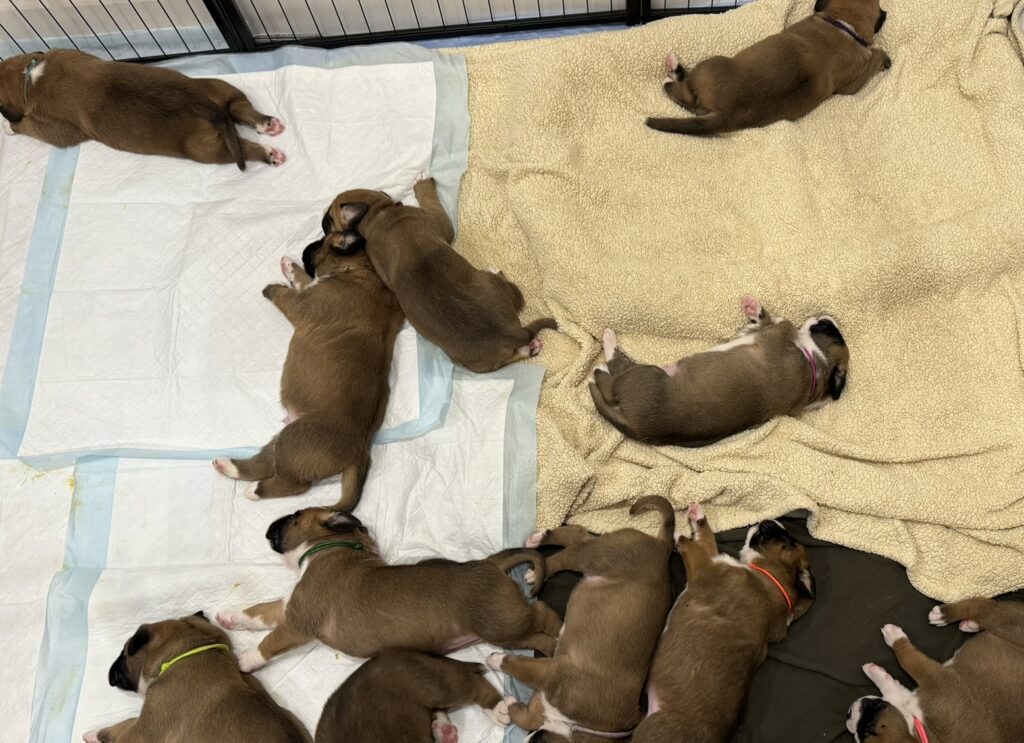
Litter Potty Training: Initial Setup
With puppies between 3 and 4 weeks of age, you will want to divide their space into two: sleeping and pottying. The potty area should be directly across from their sleeping area, so that they wake up and immediately walk over to the potty area. This will give them success early on, which you can build on.

If the puppies are nursing on their mom, you will need to ensure that there is adequate space in the sleeping area for her to lay down to nurse. Moms may still help clean up and tidy the pen at this age, though many moms tend to clean less and less once their puppies start eating wet (solid) food.
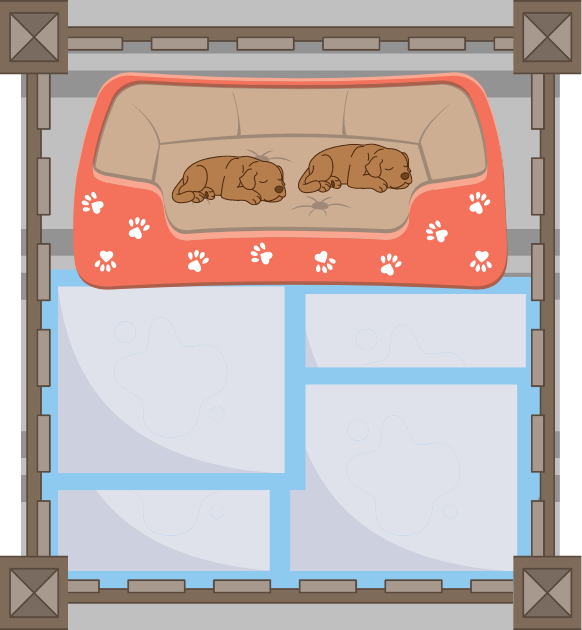
Initially, lay down disposable pee pads over a reusable pee pad (or whelping pad) for about half of the pen’s space. We are dividing it into sleeping area and potty area.
The sleeping area should have softer, cozier bedding, while the potty area should be less inviting and warm.
As puppies are learning, you will need to quickly replace any soiled linens in the sleeping area with fresh ones to make it clear where the potty area is. The goal is to keep the sleeping area clean, while the potty area should smell like pee, which will tell their noses where to go.
The first week or two of adding the potty area can be a lot of work, but the reward is well worth it–just stick with it and be patient! Most pups figure it out within a couple of weeks, and for the remainder of their foster period, they will use the potty area 90% or more often!
Initial Potty Training Tips
- Be vigilant about removing soiled linens as often as you find them. Keep the sleeping area smelling clean and fresh.
- Make the bathroom area the least cozy spot and sleeping area the coziest spot.
- When a puppy first wakes up, you can place them on the potty pad so they will go and make the area smell like urine. You can also layer a fresh pee pad over a used one to make the potty area sufficiently odorous.
- Make sure to keep the potty area in the same place as much as possible! This makes it easier for young pups to learn where to go.
- Place the potty area directly in front of their sleeping area and then later closer to the pen exit (often where pups will run to when woken up!).
Litter Potty Training: Phase 2 Setup
Once your litter of pups figures out the concept of pottying in one area and sleeping in the other, you can add more room for them to sleep, play, and eat. This may mean a slightly smaller potty area or just expanding their total area (depending on the space you have them in).
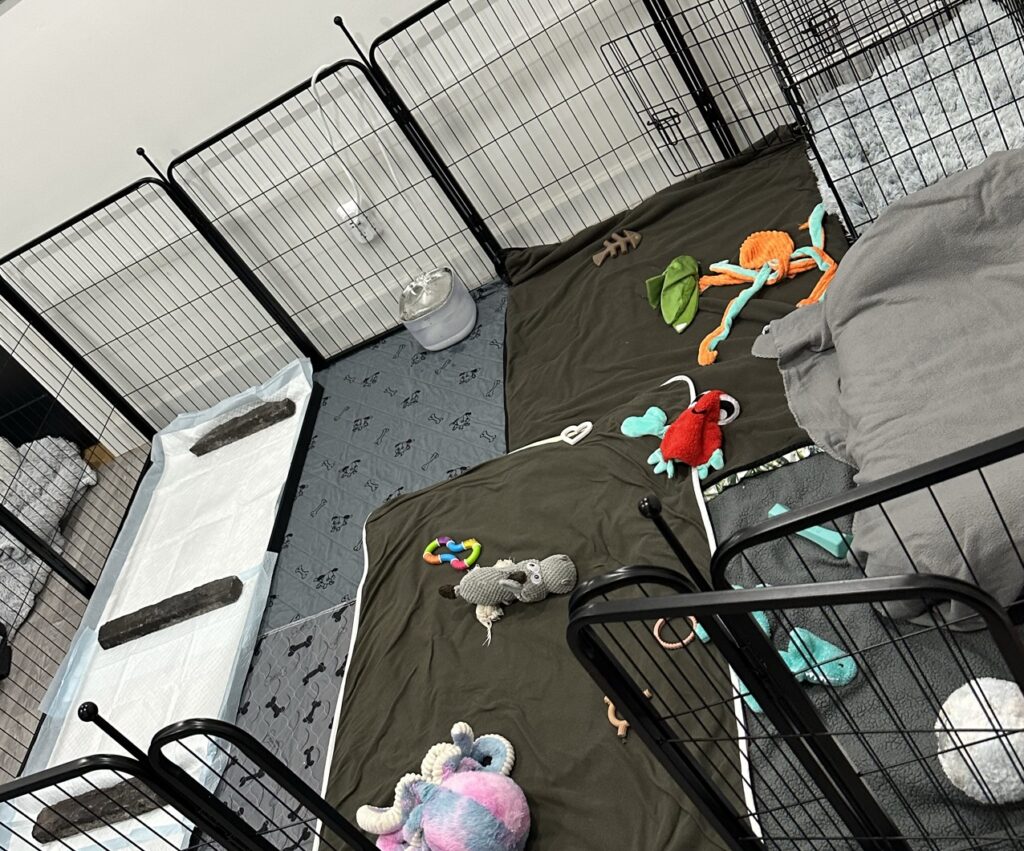
You may have to get creative on how to hold down the disposable pee pads–like bricks, weights, or crate grates–to keep them in place and prevent puppies from pulling at them. The most puppy-proof set-up has metal grates over crate pans with reusable pee pads between the two.
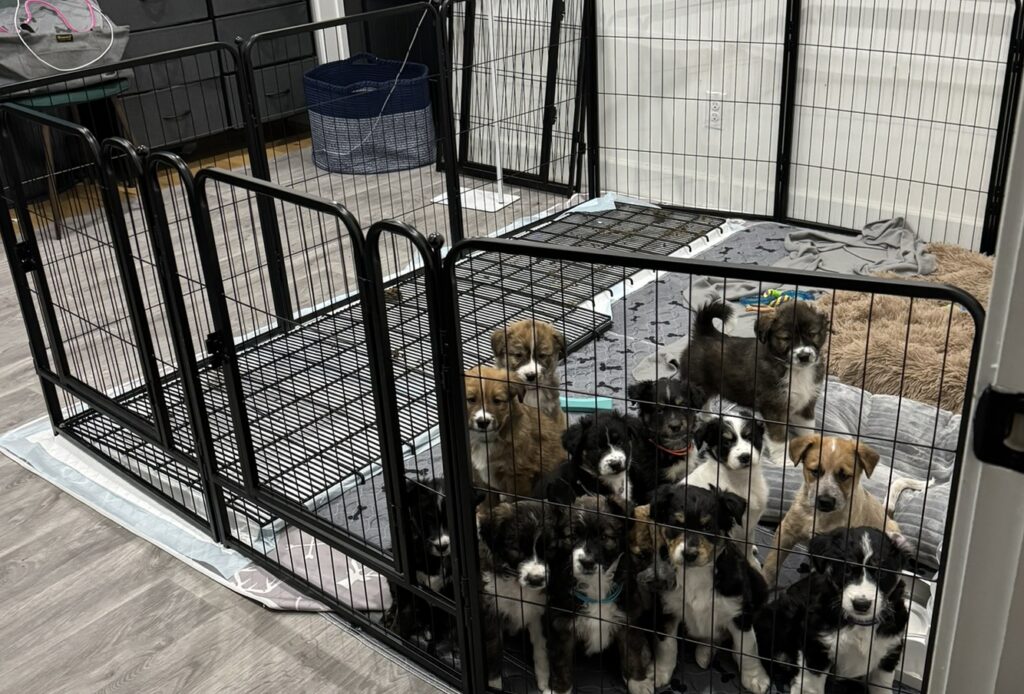
In my experience, puppies who have grown up using disposable pee pads typically take longer to chew them up (sometimes never getting the urge), especially if you provide them the right things to chew on! If you end up having to use grates (which are also EXCELLENT if your pups’ have diarrhea), just make sure to hose them off daily to make cleaning easier on you.
When to Start Formal Potty Training
Puppies as young as six weeks can benefit from being taken to an outdoor potty area after waking up, after eating/drinking, and after a big play session. To house train a puppy, it’s about ensuring you’re taking them to where they should be going often and when you expect they’ll go. The more consistent you are, the faster they catch on.
Obviously, if you have 12 puppies, it can be difficult to get all of them outside to potty fast enough that you don’t have any accidents. The less puppies you have, the more feasible it is to take the extra steps needed to work on formal potty training. I usually transport my puppies in a wagon or rolling cart (depending on how many and how big they are) to avoid accidents between the puppy room and outside! They always get quite good at loading and unloading themselves!
If you can manage it, especially during the day time, getting them to potty outside more often than not will set them up for early success in their forever homes. It can take some effort, but it is well-worth it – plus, it should mean a little less cleaning for you, too!
This method of early potty training as helped me manage larger litters–as large as 14!–through 10 weeks of age. By the time they’re 8-weeks old, many of them only pee once or twice overnight in their pen (in the designated area) with a few poops here and there. I have also had good feedback from adopters that their formal potty training was a smooth process!

